Why Do Golfers Tape Their Fingers Before Hitting the Course?
Golfers tape their fingers to prevent injuries from repetitive motions, provide support for existing injuries, and improve grip comfort. It’s a popular technique among amateurs and pros alike, offering a lightweight and effective solution compared to gloves, especially in warm climates. Proper finger taping enhances performance and allows golfers to play comfortably for longer durations.

Key Takeaways
- Finger taping in golf prevents injuries from repetitive motions and supports existing conditions.
- Taping improves grip comfort, offering a lightweight alternative to gloves, especially in warm climates.
- Proper finger taping enhances performance and allows for longer, more comfortable play.
- Golfers can choose from various types of tape, including athletic, kinesiology, and specialized blister prevention tapes.
- Alternatives to finger taping include gloves, tacky sprays, golf towels, and larger grips, catering to different player preferences and needs.
Introduction
Players spend hours on the course perfecting their swings, putting techniques, and club grips. However, many people may not be aware that golfers often tape their fingers while playing.
Why do they do this? Let’s take a closer look.
Firstly, golfers tape their fingers to prevent injuries caused by repetitive motions. Golfers can take thousands of shots during practice or tournaments, and this can lead to hand soreness or even bleeding in extreme cases. Taping their fingers helps reduce friction between the skin and the club grip, making it more comfortable to play golf for longer periods of time.
Secondly, taping fingers can provide additional support for players who have existing injuries or conditions. For example, suppose a golfer has arthritis in their hands or suffers from blisters due to frequent golf-related activities like bunker shots or tee-offs, in that case, finger taping can help them continue playing while minimizing discomfort.
Thirdly, some pro golfers choose to wear gloves, while others opt for finger taping as an alternative. Wearing gloves can be cumbersome and uncomfortable for some players., especially when playing in warmer climates where sweating is common.
Enjoying this article? Read more:
Check out this video below from the Dan Patrick Show YouTube channel:
In these situations, finger taping provides an effective solution that is lightweight and easy to apply.
Golfers often want to replicate the best pro tour events with as much precision and accuracy as possible so they turn to various techniques such as finger taping to accomplish this goal. This means that even small details like finger taping can make a big difference when it comes to winning tournaments.
With these reasons in mind, it’s clear why finger-taping has become a popular technique among many professionals and golfers alike. As we continue this article., we will explore the science behind finger taping, the types of tapes used by golfers, and how you too can properly tape your fingers for optimal performance on the golf course.

Why Do Golfers Tape Their Fingers?
Golf is a challenging sport that requires a lot of skill and patience to master. One of the most important aspects of golf is the grip, which means how you hold the club.
The grip can make or break your shot, and that’s why golfers are always looking for ways to improve it. One technique that many golfers use is finger taping.
Finger taping is the practice of wrapping tape around one or more fingers to provide additional support and protection. Many golfers tape their fingers to prevent blisters from forming on their hands.
Blisters are painful and can make playing multiple shots difficult without a break. By taping their fingers, golfers can avoid these painful sores and keep playing for longer periods.
Imitating professional golfers is another reason why some players tape their fingers. Many professional golfers have been seen with taped fingers during tournaments and practices.
Senior players are especially known for this practice since they have played thousands of shots over their career, leading them to thicken skin on certain areas of their hands, which could lead them to discomfort while holding clubs without additional protection. When you’re playing a round of golf, you must maintain a perfect grip on your clubs throughout the game.
"Many golfers turn to finger taping for improved grip and hand protection. This technique, often seen in professionals, prevents blisters and enhances control, especially in hot conditions. It's a simple, cost-effective way to elevate your game without sacrificing comfort."
If your hands start feeling uncomfortable or sweaty during play, you may lose control over your club grip, resulting in bad shots or even penalties due to Rules of Golf violations in tournaments. Taped fingers provide an added layer of support that helps keep the hands dry and less prone to slipping off the club grip, especially when playing in hot weather conditions where sweat could influence grips negatively.
Additionally, having tape around your fingers provides an extra layer between your skin and the club handle, providing more hand protection too! Overall, finger taping has become a popular technique among many amateur and professional golfers alike, looking for better hand protection from blisters while also improving overall grip strength on the clubs they use.
It’s an easy and inexpensive way to enhance your golf training, and you won’t have to worry about any discomfort while playing your favorite sport. However, it’s important to note that some golfers prefer using golf gloves instead of taping their fingers, so it’s up to personal preference.
Enjoying this article? Read more:
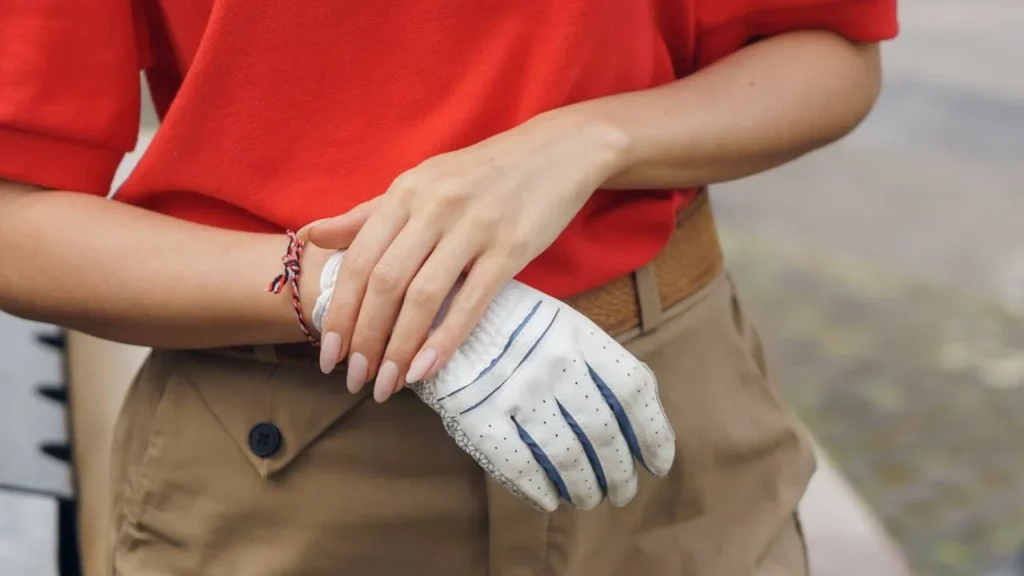
The Science Behind Finger Taping
Have you ever wondered why so many golfers wear tape on their fingers?
Is it for grip comfort or additional protection? Well, the truth is that there is actual science behind finger-taping in golf. Professional golfers use finger tape for various reasons.
For some, it’s to prevent blisters and bleeding that can be caused by multiple shots or jarring from hitting the ball. For others, it’s to provide an extra layer of protection for their hands. Finger taping can also help create the perfect grip.
The right finger placement is crucial for a successful shot when gripping a club. Some golfers may have thickened skin or calluses on their hands that alter their grip and affect their swing.
Taping fingers in precise locations can help make up for this disadvantage by adding an additional layer of cushioning and grip comfort. Self-adhesive tapes are commonly used because they are easy to put on and take off, leaving no residue or damage to the skin.
These tapes come in a variety of thicknesses and materials, such as cotton or synthetic fibers, that are specifically designed for athletes. Jordan Spieth, one of the top pro golfers who wears finger tape during practice rounds, says he began doing so after noticing other professional golfers using it.
He has found that it helps him maintain his proper grip without having to constantly reposition his hand. In addition to providing benefits on the course, finger taping can also be helpful during practice sessions.
Golfers will often use a towel between shots to keep their clubs clean and dry; however, this can lead to calluses on their hands from repeatedly rubbing against the towel. Taping fingers during practice can help prevent this from happening.
There is much more behind finger taping than just appearance alone when onlookers see professional players hit balls with an array of tapes adorning their hands. Everything about these tapes, from the materials used to the precise placement of each strip, is informed by science and a deep understanding of how to achieve the perfect grip for maximum performance.

Types of Tapes Used by Golfers
When it comes to finger taping for golf, there are a few different types of tape that golfers tend to use.
One popular option is athletic tape, which is made from cotton and can be easily torn by hand. This type of tape provides a good amount of support and cushioning for the fingers, which can help prevent blisters and soreness during long sessions on the course.
Another type of tape that some golfers use is kinesiology tape. This type of tape is designed to mimic the natural movement of muscles and joints, so it can be great for golfers who want to maintain flexibility in their fingers while still providing some support. Kinesiology tape is also breathable and water-resistant, so it won’t get uncomfortable even if you sweat or play in wet conditions.
Some golfers also prefer to use specialized blister prevention tapes, such as Moleskin or Second Skin. These tapes are designed specifically to protect your skin from rubbing against your clubs or other surfaces, which can cause blisters over time. They are often thicker than athletic or kinesiology tapes, but they can provide extra protection for hands that are prone to blisters.
Some golfers also opt for more DIY solutions when it comes to finger taping. For example, you might see players wrapping their fingers with strips of towel or cloth from their bags. While this might not be as effective as using specialized tapes, it can still provide some protection against blisters and soreness during a round.
The type of tape you choose will depend on your personal preferences and needs as a golfer. Some players may find that one type of tape works best for them across all conditions and courses—Jordan Spieth famously uses athletic tape on his fingers at all times—while others may prefer to switch things up depending on the weather or their level of fatigue during a particular game.
It’s worth noting that there are rules around what kind of tape you can use on the course. According to the Rules of Golf, you are allowed to tape your fingers for medical reasons but not for performance-enhancing purposes.
If you’re using tape specifically to improve your grip or handgrip position, that would be considered a violation of the rules. However, as long as you’re using tape solely for blister prevention or to manage an existing injury or soreness, you should comply with the rules.
Enjoying this article? Read more:
Check out this video below from www.sportsinjuryclinic.net‘s YouTube channel:
How to Tape Your Fingers for Golf
Taping your fingers for golf can be a game-changer when it comes to improving your grip and reducing hand soreness. It’s a simple process that you can easily do yourself, and you don’t need any special equipment to get started.
Here’s how to tape your fingers for golf:
Before You Begin:
- Gather Your Supplies: You will need golf finger tape or stretch plaster, a pair of scissors, and a clean golf towel.
- Prep Your Hands: Start by thoroughly washing your hands with soap and water to remove any dirt or oils that may affect the tape’s adhesion. Then, dry your hands completely using the golf towel.
Taping Procedure:
- Cut the Tape: Using the scissors, cut a piece of finger tape or stretch plaster long enough to wrap around the base of your index finger twice.
- Create the Splits: Begin by wrapping the tape around the base of your index finger, ensuring it covers half an inch above the knuckle. Wrap it around twice to create a secure base.
- Repeat for Other Fingers: Repeat the same process with your middle finger, ensuring both splits are of equal length and snug but not too tight.
- Secure the Tape: Once both index and middle fingers are taped, wrap another strip of tape around both fingers together over each split area. This extra layer ensures stability and prevents the tape from coming loose during play.
- Check for Comfort and Mobility: Before hitting the course, gently flex your fingers to ensure they can move freely without restriction. Adjust the tape if necessary to maintain comfort and flexibility.
Final Steps:
- Test Your Grip: Hold your golf club to ensure that the taped fingers feel secure and comfortable during your swing. Make any adjustments as needed to achieve the perfect grip.
- Enjoy Improved Performance: With your fingers properly taped, you can confidently play multiple shots without worrying about hand soreness or grip issues. Embrace the enhanced control and comfort that this technique provides, allowing you to focus on your game and achieve better results on the course.
It’s important not to wrap too tight, as this will restrict movement in these areas; however, make sure they feel secure enough not to move while holding a club grip when playing golf. That’s it!
Now you’re ready for multiple shots without worrying about any hand soreness caused by weak, cracked areas or tendons being put under pressure during strokes. Proper joint taping techniques like this one are an excellent example of income-generating tools used by pro golfers worldwide as they provide better control over their club grips, which is essential for a good swing and, hence, a good game.
Enjoying this article? Read more:
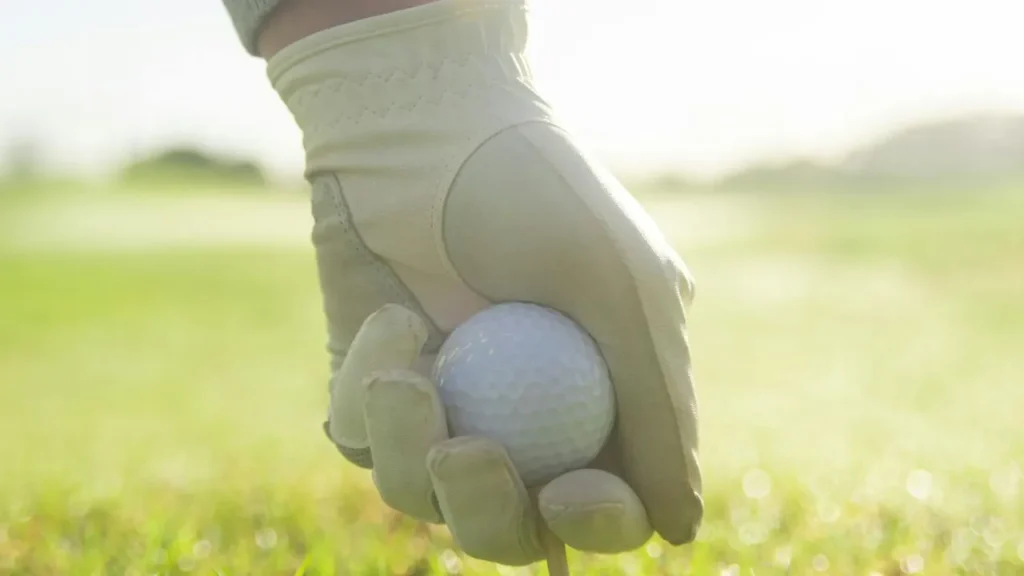
Famous Golfers Who Tape Their Fingers
Spotting top golfers with their fingers taped during games is not uncommon. From legends to rising stars, many players utilize this technique for various reasons. Let’s take a closer look at some of the famous golfers who tape their fingers:
Tiger Woods: Perhaps the most renowned golfer of all time, Woods has been using finger taping since the early 2000s. He relies on it to protect his hand from soreness and discomfort caused by intense swings and repetitive motions.
Jordan Spieth: Another prominent figure on the golf scene, Spieth is known for his versatile approach to finger taping. He wraps tape around whichever finger or joint feels sore during games, emphasizing the importance of achieving the perfect grip for optimal performance.
Bernhard Langer: As a senior player with decades of experience, Langer understands the significance of joint taping for enhanced grip comfort and hand protection. He incorporates this practice into his routine to minimize the risk of blisters and discomfort during competitive rounds.
Rory McIlroy: McIlroy, a powerhouse in the golfing world, adopts a strategic approach to finger taping. He focuses on taping only one finger—the small or right finger—believing it provides him with a more secure grip on his clubs while maintaining control over his shots.
These golfing icons, along with many others, swear by the benefits of finger taping for added comfort and injury prevention on the course. While there are no strict rules regarding this practice, its widespread adoption among professionals highlights its effectiveness in improving performance and prolonging playing careers.
Experimenting with finger tape could offer valuable advantages on the golf course. Consider incorporating this technique into your pre-game routine to enhance grip comfort and minimize the risk of hand-related issues. By following in the footsteps of these famous golfers, you may discover a new strategy to elevate your game to the next level.

Enjoying this article? Read more:
Check out this video below from Swing Surgeon Golf‘s YouTube channel:
Alternatives to Finger Taping
While finger taping is a popular practice among golfers, several alternatives can be used. Many professional golfers use gloves to protect their hands during numerous swings.
Gloves are particularly helpful in preventing blisters and hardened skin on the hand that holds the club. It is important to note that gloves must comply with the rules of golf and should not be worn unless necessary.
Some players prefer using grip-enhancing products such as tacky sprays or lotions instead of taping their fingers. These products improve the grip on the club, allowing players to maintain control of their swings without causing damage to their hands.
However, it is important to ensure the product does not leave residue on the club. Alternatively, some players choose to use a golf towel as a protective measure for their hands when holding the club.
The towel provides cushioning between the hand and club, preventing soreness and bleeding from excessive rubbing or pressure. Senior players who experience hand soreness and want improvement may also benefit from using larger grips on clubs instead of taping fingers.
The larger grips reduce the need for constant gripping, which can put unnecessary pressure on fingers. Overall, while finger taping may be a popular choice among some pro golfers, there are alternatives available that provide hand protection without compromising etiquette or affecting performance on tour.
Enjoying this article? Read more:

Conclusion
Taping fingers in golf is a common and helpful practice among players of all levels. While some may view taped fingers as an oddity, the benefits are clear: added cushioning, protection against blisters and calluses, and a potentially better grip.
Whether a beginner or a pro, taping your fingers can help prevent hand soreness after numerous swings on the golf course. Additionally, it is considered good etiquette to take care of one’s hands during golf-related activities.
Many senior players also use tape for extra support due to weakened joints or damaged hands. The top players on the pro tour have long used this method to perfect their grip and avoid slipping during critical moments.
Taped fingers are especially useful when playing in hot weather conditions where sweaty hands can cause the club to slip. While there are alternatives such as golf gloves or building up hardened skin on your hand through practice, taping has remained popular because it provides immediate relief without sacrificing tactile feedback from the club.
So next time you head out for a round of golf, consider adding some tape to your fingers. It could make all the difference in your game and keep your hands protected for years to come.

FAQs
Is finger taping essential for all golfers?
While not mandatory, finger taping becomes a valuable tool for golfers who experience blisters, calluses, or need a touch more grip security.
What are the main reasons golfers use finger tape?
Blister prevention and protection for existing calluses are the primary reasons golfers rely on finger tape for a smoother, pain-free swing.
Does finger tape affect a golfer's grip or feel?
High-quality, thin tape creates a minimal barrier, allowing golfers to maintain their preferred grip pressure and feel for the club.
Beyond blisters, are there other injuries finger tape can help with?
Minor cuts, worn calluses, or even finger instability can benefit from the added support and protection offered by finger tape.
How does finger tape compare to traditional bandages for golfers?
Unlike bulky bandages, finger tape is specifically designed for grip comfort, offering a thin, sweat-resistant layer of protection.
Are there different types of finger tape for golfers?
Absolutely! Golfers can choose from various tapes offering moisture-wicking properties, varying levels of stretch, and even different colors for a personalized touch.
How often should golfers replace their finger tape?
For optimal adhesion and hygiene, golfers should replace their finger tape after each round or practice session.
Can finger taping improve a golfer's swing?
While not a magic fix, preventing pain and distractions through finger taping can indirectly lead to a more consistent and powerful swing.
Are there any professional golfers known for using finger tape?
Tiger Woods is a famous example! Many professional golfers use finger tape as part of their regular routine to maintain peak performance.
Should beginner golfers consider using finger tape?
Even beginners who haven’t developed calluses can benefit from finger tape to prevent blisters during those initial practice sessions that involve a lot of grip pressure.
Share this Post
Toni Benedito
Keep Reading
Follow Us
Recent Posts
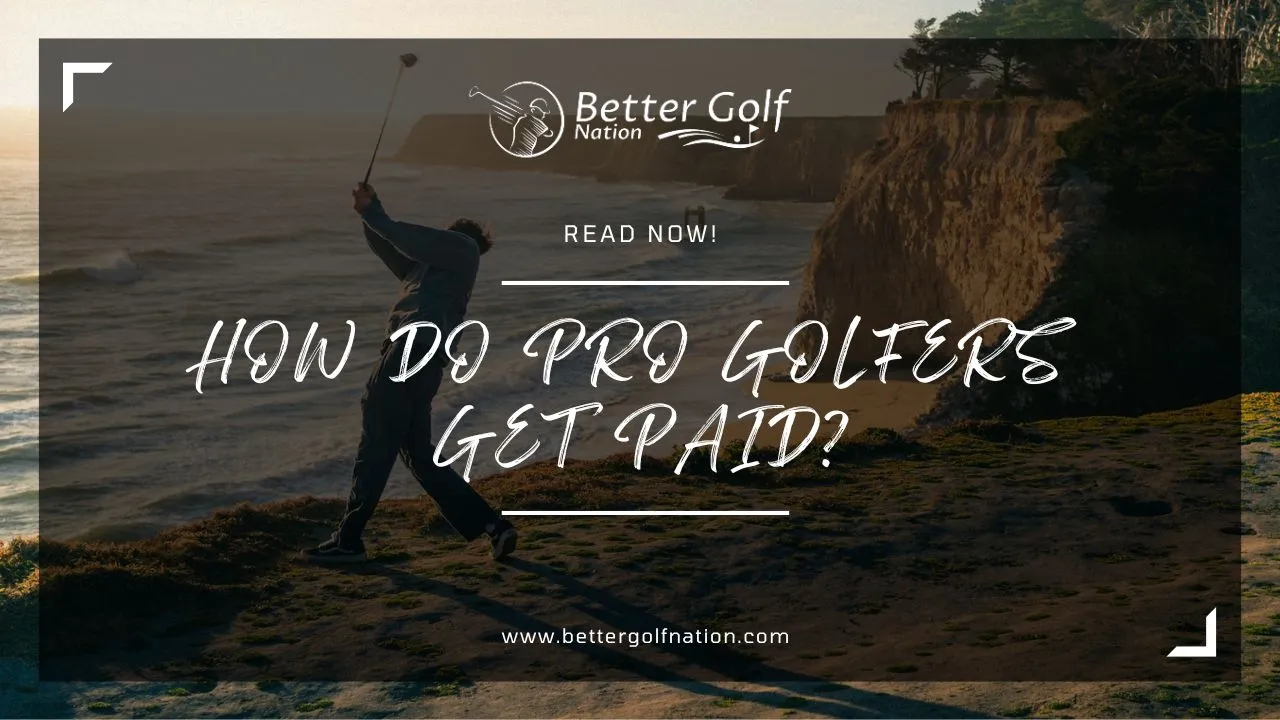
How Do Pro Golfers Get Paid? The Business of Golf
Professional golfers get paid both before and after tournaments. Before a tournament, they receive appearance fees, sometimes exceeding $1 million, to attract top players. After the tournament, earnings depend on their placement, with the PGA

How Much Do Golf Players And Pros Make? You Won’t Believe It!
Professional golfers earn substantial incomes through tournament winnings, sponsorship deals, and endorsements. Top players on the PGA Tour can make millions annually, with significant earnings from prize money and lucrative brand partnerships. For example, Rory
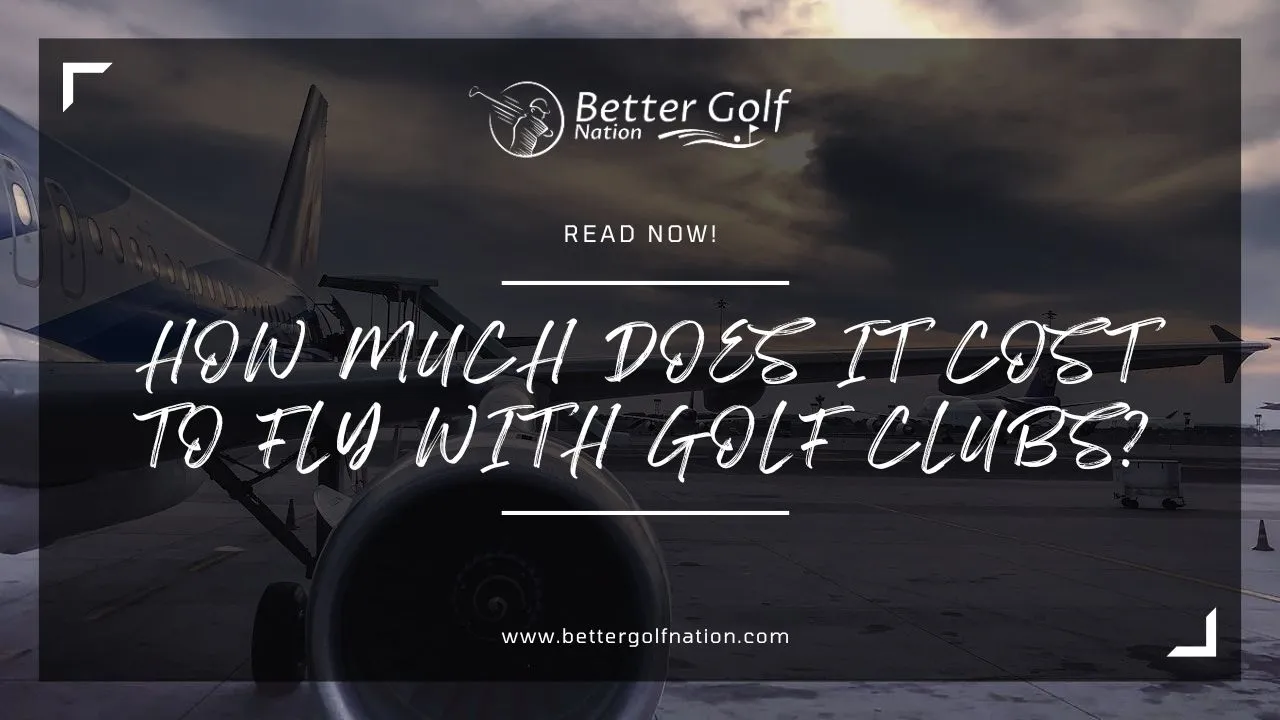
The Shocking Cost: How Much Does It Cost to Fly with Golf Clubs?
Flying with golf clubs can be a hassle, but it’s worth it for avid golfers. Costs vary by airline, ranging from $30 to $150 per way. Southwest Airlines offers a generous policy, allowing one set
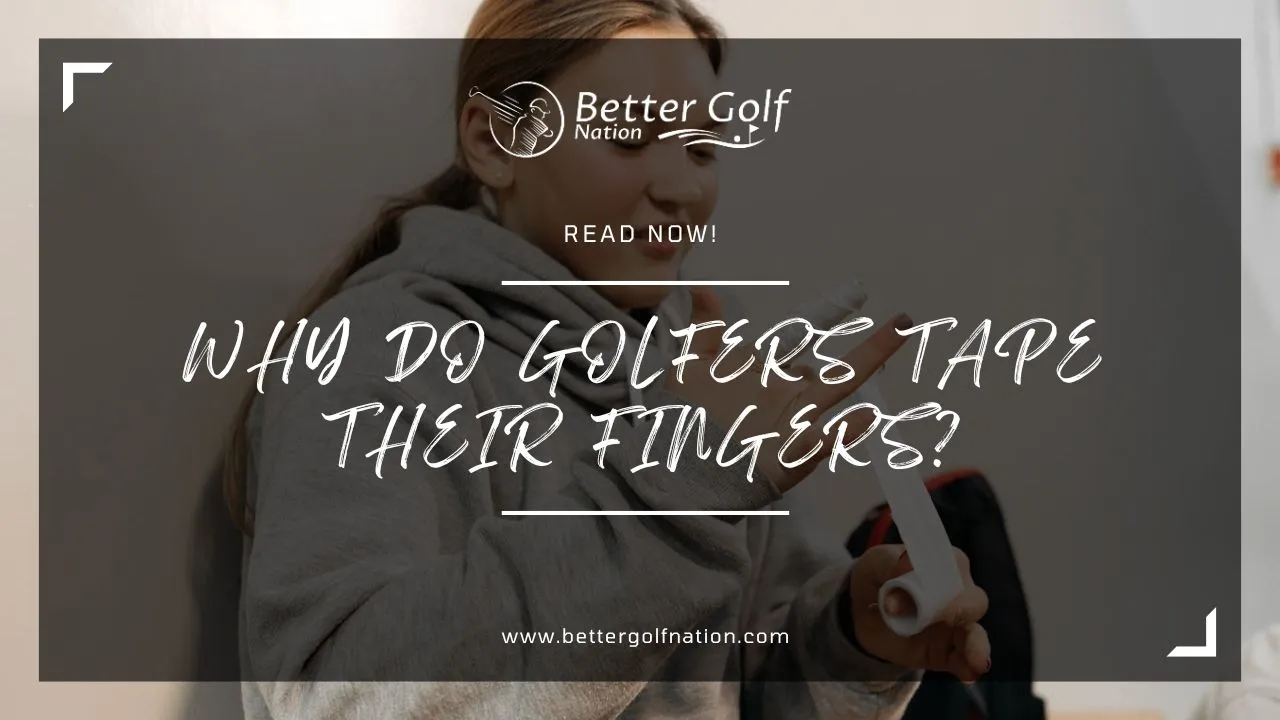
Why Do Golfers Tape Their Fingers Before Hitting the Course?
Golfers tape their fingers to prevent injuries from repetitive motions, provide support for existing injuries, and improve grip comfort. It’s a popular technique among amateurs and pros alike, offering a lightweight and effective solution compared

How Much Does a Round of Golf Cost? Are You on Par?
The cost of a round of golf varies widely based on factors like course type, location, and time of play. Public courses typically range from $30-$100 per round, while exclusive ones like Augusta National or

Hidden Fees: How Much Does It Cost To Rent a Golf Cart
Wondering how much it costs to rent a golf cart? Explore factors like location, rental duration, and cart type impacting prices. Daily rates range from $50 to $80, while weekly rentals can vary from $200
Table of Contents







